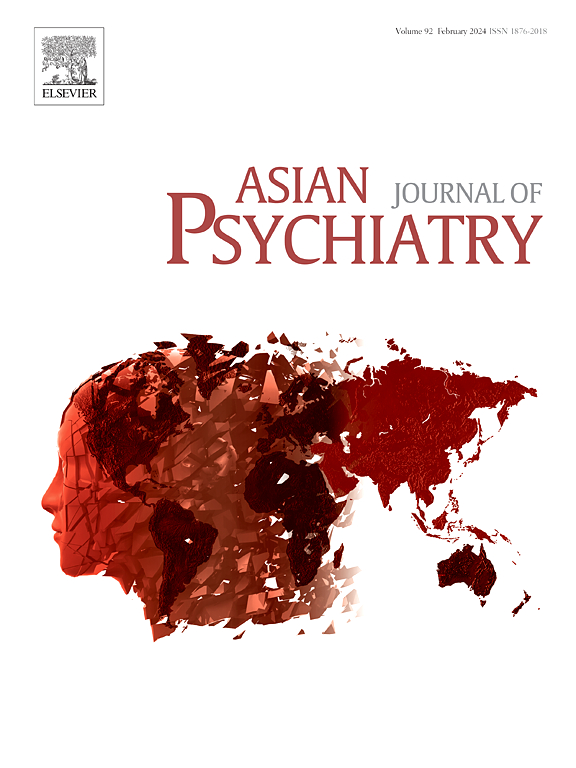默认模式网络子系统的静息状态功能连通性作为首发drug-naïve精神分裂症患者妄想的潜在生物标志物。
IF 4.5
4区 医学
Q1 PSYCHIATRY
引用次数: 0
摘要
目的:以往的研究表明妄想与默认模式网络(DMN)之间存在密切联系。本研究旨在探讨首发drug-naïve精神分裂症(FESCZ)患者幻觉与亚系统特异性DMN静息状态功能连通性(rsFC)之间的关系。方法:本研究招募79例FESCZ患者。使用PANSS P1项目评估妄想的严重程度,得分≥ 4定义妄想的明显存在。在11个DMN种子区之间计算种子到种子的rsFC矩阵,这些种子区属于三个子系统:核心、背内侧前额叶皮层(dMPFC)和内侧颞叶(MTL)。结果:与无明显妄想的患者相比,明显妄想患者核心与MTL子系统之间表现出超连通性。妄想严重程度与核心- mtl rsFC强度呈正相关。事后分析显示,特定的rsFC边缘(扣带后皮层和脾后皮层之间,以及扣带后皮层和后下顶叶之间)与妄想的严重程度显著相关。结论:DMN核心- mtl rsFC强度与FESCZ患者妄想相关,可作为妄想严重程度的潜在生物标志物,为妄想治疗提供新的神经生物学见解。本文章由计算机程序翻译,如有差异,请以英文原文为准。
Resting-state functional connectivity of the default mode network subsystems as a potential biomarker for delusions in patients with first-episode drug-naïve schizophrenia
Objectives
Previous studies have indicated a close association between delusions and the default mode network (DMN). This study aimed to explore the relationship between delusions and resting-state functional connectivity (rsFC) of subsystem-specific DMN in patients with first-episode drug-naïve schizophrenia (FESCZ).
Methods
This study recruited 79 FESCZ patients. The severity of delusions was assessed using the PANSS P1 item, with a score of ≥ 4 defining the clear presence of delusions. Seed-to-seed rsFC matrices were calculated between 11 DMN seed regions, which belong to three subsystems: the core, the dorsomedial prefrontal cortex (dMPFC), and the medial temporal lobe (MTL).
Results
Compared with patients without clear delusions, patients with clear delusions exhibited hyperconnectivity between the core and the MTL subsystems. The severity of delusions was positively correlated with the core-MTL rsFC strength. Post-hoc analyses revealed that specific rsFC edges (rsFC between posterior cingulate cortex and retrosplenial cortex, as well as between posterior cingulate cortex and posterior inferior parietal lobule) were significantly correlated with the severity of delusions.
Conclusions
The DMN core-MTL rsFC strength is associated with delusions in FESCZ patients, which may serve as a potential biomarker for the severity of delusions and offer novel neurobiological insights for delusions treatment.
求助全文
通过发布文献求助,成功后即可免费获取论文全文。
去求助
来源期刊

Asian journal of psychiatry
Medicine-Psychiatry and Mental Health
CiteScore
12.70
自引率
5.30%
发文量
297
审稿时长
35 days
期刊介绍:
The Asian Journal of Psychiatry serves as a comprehensive resource for psychiatrists, mental health clinicians, neurologists, physicians, mental health students, and policymakers. Its goal is to facilitate the exchange of research findings and clinical practices between Asia and the global community. The journal focuses on psychiatric research relevant to Asia, covering preclinical, clinical, service system, and policy development topics. It also highlights the socio-cultural diversity of the region in relation to mental health.
 求助内容:
求助内容: 应助结果提醒方式:
应助结果提醒方式:


